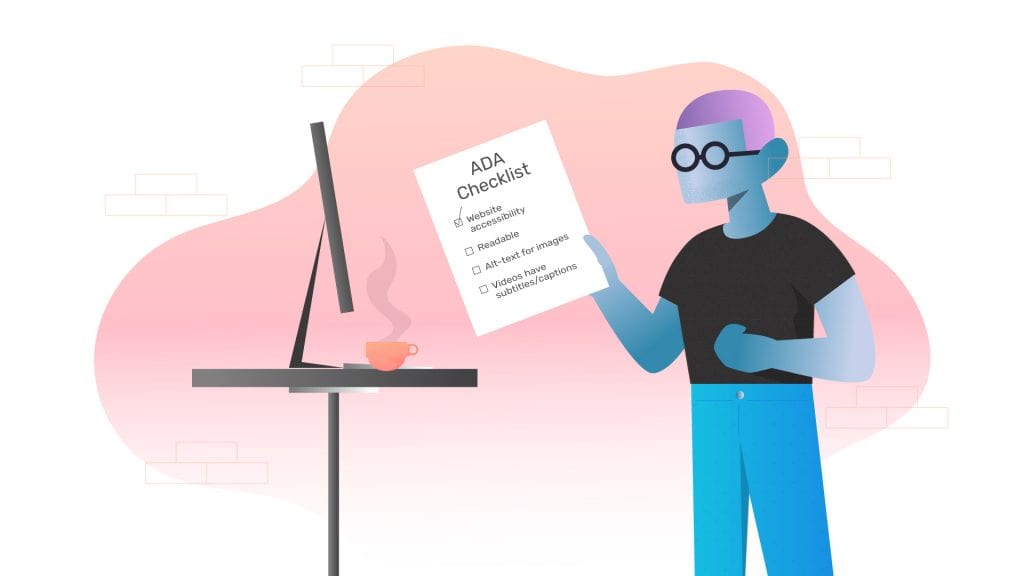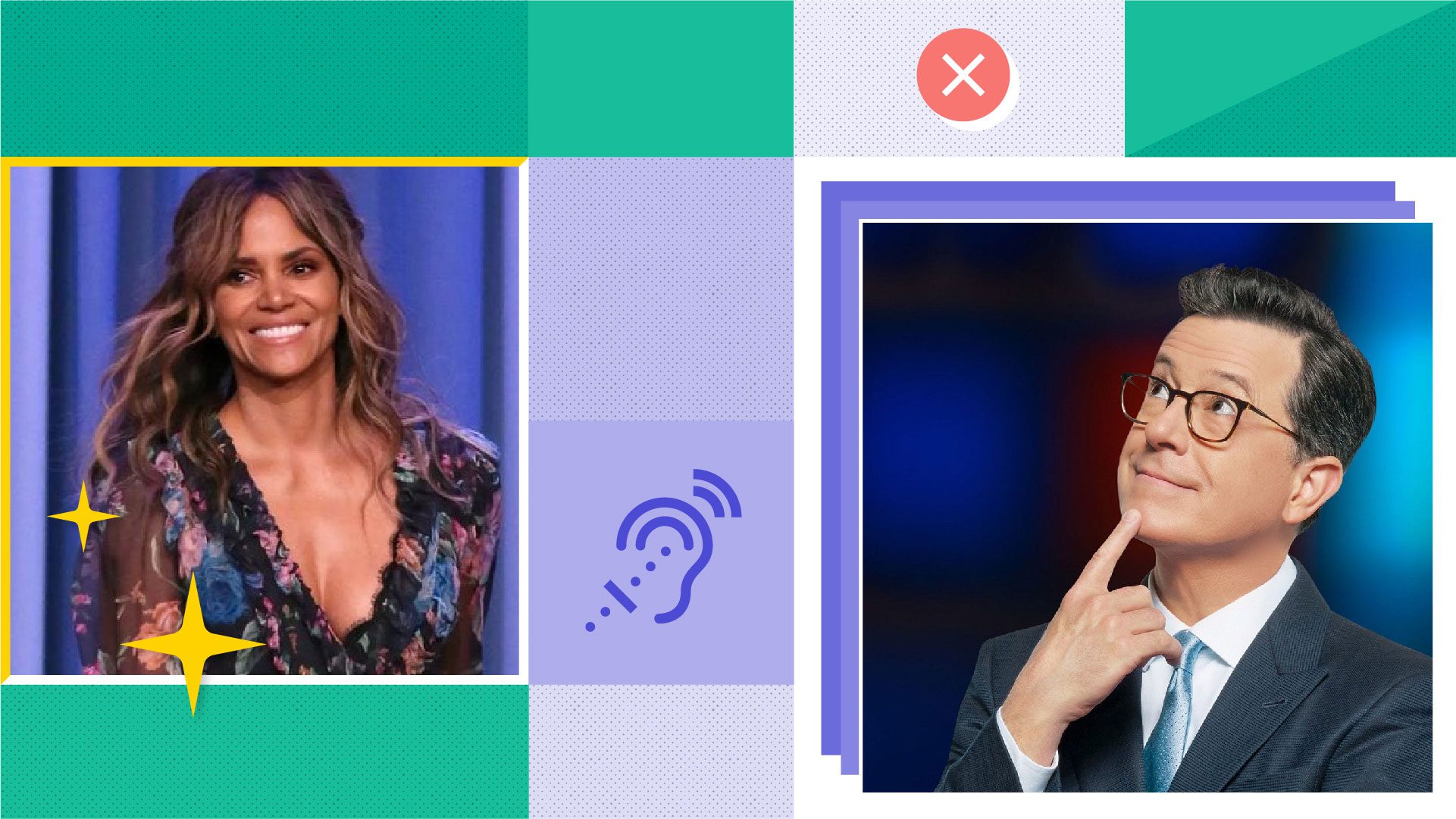ADA Compliance Website Checklist – WCAG 2.0 Website Accessibility Checker

Rev › Blog › Accessibility ›
WCAG 2.0 Website Accessibility Checklist
Since the Americans with Disabilities Act doesn’t provide any specific guidelines or requirements around website accessibility, the World Wide Web Consortium’s WCAG 2.0 framework offers the most practical checklist for ensuring accessibility compliance across all areas of your site.
The WCAG 2.0 is designed as a series of testable statements that can be applied to all sites. It’s important to note that a site doesn’t have to cover every single standard in order to be accessible. These standards are meant to be thorough and cover all areas of site interaction, but many only apply for certain types of content
Use this checklist to gauge the accessibility of your own site under the latest WCAG 2.0 Standards:
| YES or NO | COMMENTS | |
| WCAG 2.0 Standard: “Information and user interface components must be presentable to users in ways they can perceive.” |
Y / N |
|
| Text Alternatives | ||
| Users can access a text alternative that serves an equivalent purpose for all non-text content (e.g. images, video) |
Y / N |
|
| Closed Captions or Subtitles are included for all video and audio content |
Y / N |
|
| A thorough audio description is included for all audio elements, including information about speakers and background noise, where relevant |
Y / N |
|
| Sign language interpretation is provided for all audio and video content |
Y / N |
|
| If non-text content is primarily intended to create a specific sensory experience, then text alternatives at least provide descriptive identification of the non-text content. |
Y / N |
|
| CAPTCHA: If the purpose of non-text content is to confirm that content is being accessed by a person rather than a computer, then text alternatives that identify and describe the purpose of the non-text content are provided, and alternative forms of CAPTCHA using output modes for different types of sensory perception are provided to accommodate different disabilities. |
Y / N |
|
| Adaptability | ||
| Users can access content in a number of different ways, including the use of assistive tools like screen readers. |
Y / N |
|
| Content is organized in simple formats like outlines or structured walkthroughs |
Y / N |
|
| Content structure and organization can be programmatically determined–that is, interpreted from markup language or API choice via assistive technology |
Y / N |
|
| Understanding and operating content does not rely on solely on sensory characteristics such as shape, size, visual location, orientation or sound |
Y / N |
|
| Distinguishable | ||
| Users can identify which elements of a website are most pertinent for their needs. Site elements and sections are clearly defined, both on the front-end and in HTML tags and structure. |
Y / N |
|
| Color is not the sole means used to convey meaning, structure, or purpose of content |
Y / N |
|
| Contrast is used to clearly illustrate differences between site elements. *The minimum recommended contrast ratio for text and images is 4.5:1* |
Y / N |
|
| For blocks of text, users can select appropriate foreground and background colors |
Y / N |
|
| Text can be resized up to 200% via browser or assistive technology without losing content functionality or context |
Y / N |
|
| Images of text are used only for decorative purposes |
Y / N |
|
| If any audio on a web page plays automatically, a mechanism to pause, restart, or alter content volume is provided |
Y / N |
|
| OPERABLE | ||
| WCAG 2.0 Standard: “User interface components and navigation must be operable.” |
Y / N |
|
| Keyboard Navigable | ||
| Users who can’t operate a mouse are given keyboard-based navigation options |
Y / N |
|
| Keyboard navigation options should not be time-bound for specific keystrokes |
Y / N |
|
| Tabbing moves the cursor or site focus from section-to-section |
Y / N |
|
| Enough Time | ||
| Users can access media at their own pace | Y / N | |
| Ample time is provided for task completion, and where applicable, users can turn off a time limit before encountering it |
Y / N |
|
| Pausing is enabled for timed tasks | Y / N | |
| Users can alter speed of content playback | Y / N | |
| Interruptions to content presentation are postponed or suppressed entirely |
Y / N |
|
| Seizures | ||
| Users prone to seizures should be warned of flashing site elements |
Y / N |
|
| Multiple pop-up warnings are used | Y / N | |
| Web pages do not contain content that flashes more than three times per one second period |
Y / N |
|
| Navigable | ||
| Web pages have titles that describe their topic or purpose |
Y / N |
|
| More than one way is available to locate a web page, except where the page is the result of, or a step in, a process |
Y / N |
|
| Information about a users location within a set of web pages is available to help them orient themselves |
Y / N |
|
| UNDERSTANDABLE | ||
| WCAG 2.0 Standard: “Information and the operation of user interface must be understandable.” |
Y / N |
|
| Readable | ||
| The default language of each Web page is specified within the underlying HTML header code |
Y / N |
|
| Translation is supported for unusual or colloquial words and phrases |
Y / N |
|
| A mechanism for identifying the expanded meaning of abbreviations is included |
Y / N |
|
| A less-difficult version of prose is included for all content above a lower-secondary reading level |
Y / N |
|
| Predictable | ||
| Content on a page adheres to a central organization that doesn’t change when a user engages with or focuses on a particular element of the page |
Y / N |
|
| Navigation patterns are consistent across a site | Y / N | |
| Input Assistance | ||
| Error-correction and detection mechanisms are used to assist users entering information to forms or other input points |
Y / N |
|
| Predictive text for input fields to help offer alternatives when errors in user input are detected |
Y / N |
|
| Comprehensive, text-based help is offered for all areas of your site, particularly those where users have to enter information |
Y / N |
|
| For web pages that cause legal commitment or financial transactions: Submissions are reversable (where possible) and given ample opportunity to be checked and reviewed by the user |
Y / N |
|
| ROBUST | ||
| WCAG 2.0 Standard: “Content must be robust enough that it can be interpreted reliably by a wide variety of user agents, including assistive technologies. “ |
Y / N |
|
| Compatible | ||
| In content implemented using markup languages, elements have complete start and end tags, elements are nested according to their specifications, elements do not contain duplicate attributes, and any IDs are unique, except where the specifications allow these features. |
Y / N |



